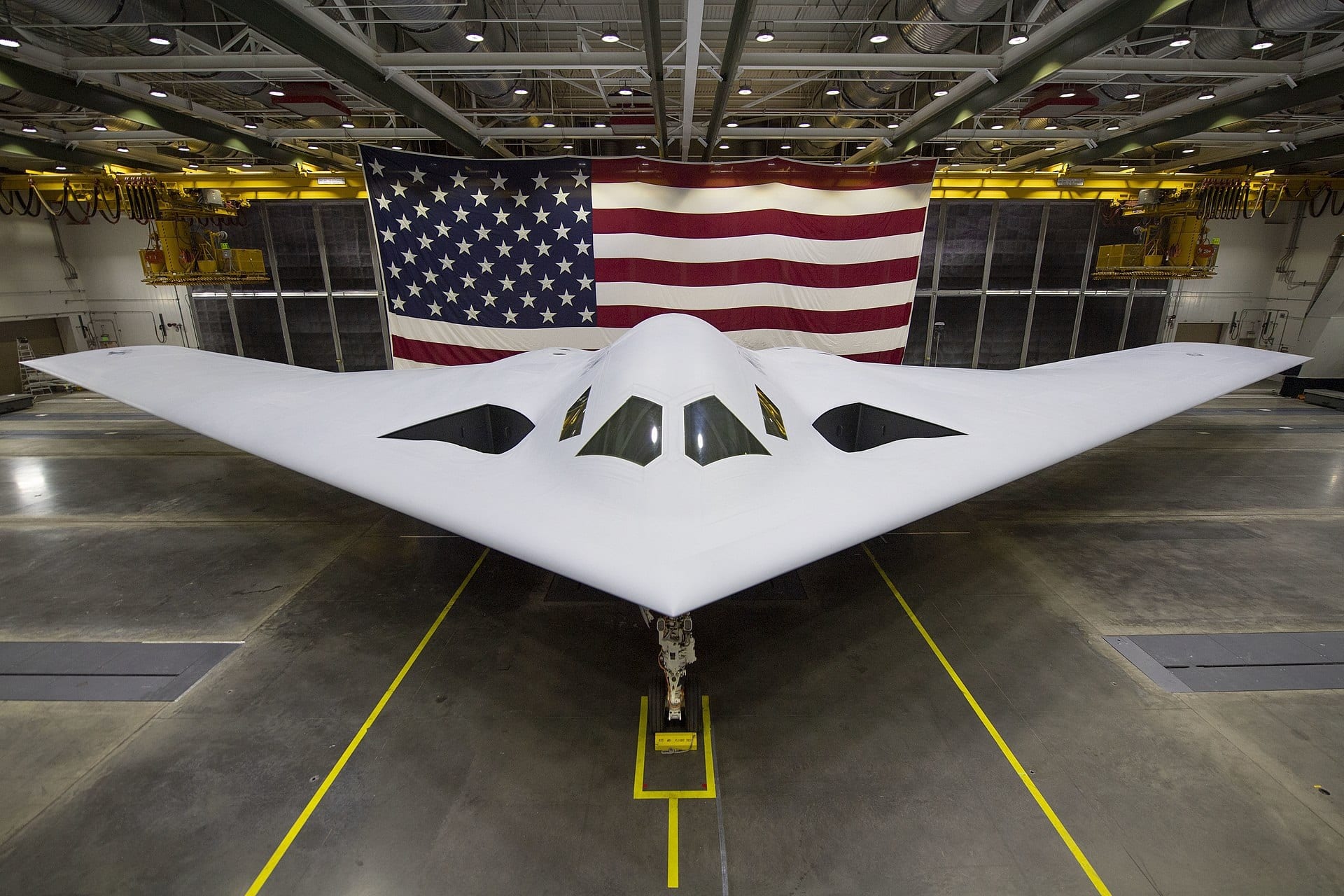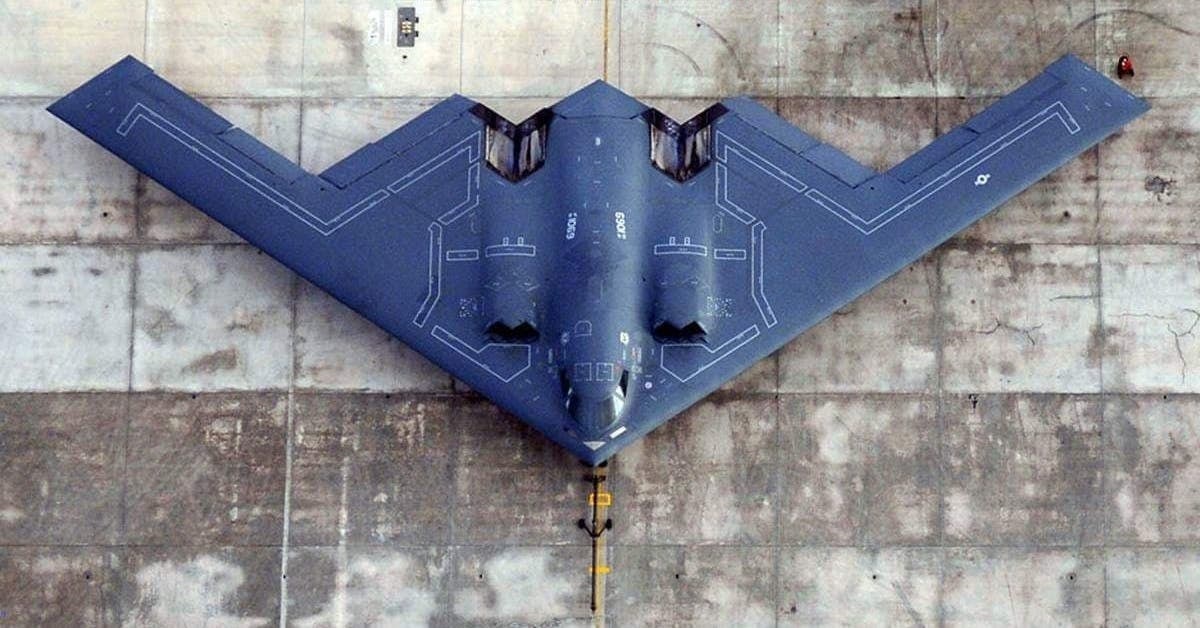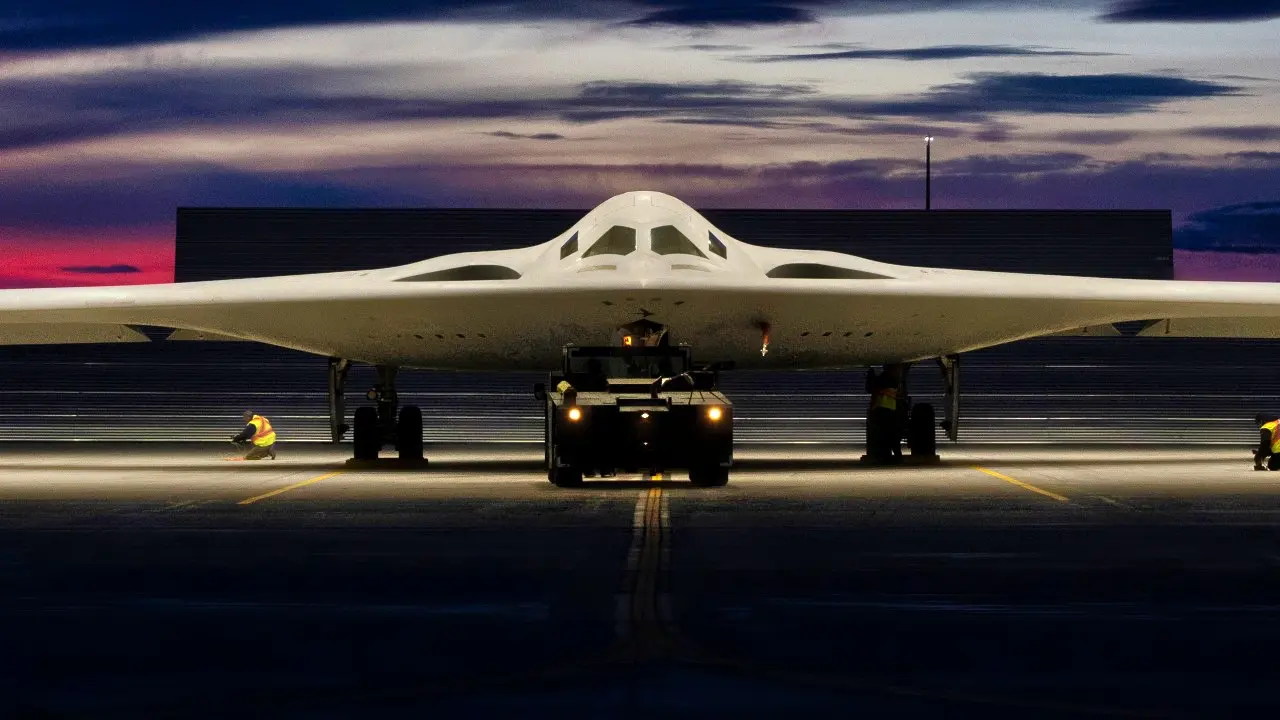Defense contractor Northrop Grumman took a $477 million loss on the B-21 bomber program in the first quarter. Executives said the expense will cover both unexpected material costs and enable the company to accelerate production of the aircraft, if that is something the Air Force has requested.
In a conference call, Kathy Warden, Northrop Grumman’s chair, chief executive officer, and president, explained the loss was “largely relating to higher manufacturing costs” for the B-21, “primarily resulting from a process change we made to enable a higher production rate, as well as increases in the projected material cost, some of which are related to macroeconomic impacts on material prices.”

B-21 Raider Bomber. Artist Rendition/Creative Commons.
The “process change” will enable a higher production rate, she added.
“We remain committed to delivering the B-21 Raider to the U.S. Air Force, despite the financial setback,” said Warden. “While this financial impact is disappointing, we continue to make strong progress on the program, meeting key performance objectives through rigorous testing. We are now progressing through the first two lots of production, and with lessons learned, we are ready to provide the Air Force with this highly capable strategic deterrent.”
The charge brings Northrop’s losses on the B-21—some elements of which are fixed-price—up to $2 billion, Warden said.
Net Earnings Down For First Quarter of FY2025
Due to the financial impact of the B-21 Raider stealth bomber program, which resulted in a significant deficit, Northrop Grumman reported net earnings of $481 million for the first quarter of 2025, compared to $944 million in the same period last year. This resulted in a $463 million decrease in year-over-year earnings. The company’s sales for the quarter also fell by $655 million, or 7 percent, primarily due to the wind-down of specific space programs.
Northrop’s operating income dropped by $498 million, or 46 percent, mainly due to the $477 million loss on the B-21 program. However, Warden noted that excluding the impact of the B-21 program, Northrop’s margin rates were in line with expectations. The company’s stock on the NYSE dropped 14 percent.
In 2023, Warden cautioned investors that the company would likely incur an initial loss on the program and then turn a profit later.
The B-21′s development and testing have been relatively smooth, and multiple officials and lawmakers have praised the program.
The Warden said the B-21 is completing its engineering and manufacturing development phase and is now undergoing key tests to prove the bomber can fulfill all its objectives. Northrop Grumman is now working through the first two low-rate initial production, or LRIP, lots, she said, and has begun advance work known as long lead work on the third and fourth lots.

The B-21 Raider was unveiled to the public at a ceremony December 2, 2022 in..Palmdale, Calif. Designed to operate in tomorrow’s high-end threat environment, the B-21 will play a critical role in ensuring America’s enduring airpower capability. (U.S. Air Force photo)
“We’ve built a good bit of experience now in building the aircraft,” Warden said, which is helping Northrop reduce the risk that comes with building a new, advanced aircraft.
The B-21 Raider Is a Powerhouse
The B-21 Raider is a dual-capable penetrating strike stealth bomber capable of delivering both conventional and nuclear munitions. The B-21 will form the backbone of the future Air Force bomber force, consisting of B-21s and B-52s. Designed to operate in tomorrow’s high-end threat environment, the B-21 will play a critical role in ensuring America’s enduring airpower capability.
The B-21 will replace the B-1 bomber and the B-2 stealth bomber. The B-21 Raider is more than just a stealth bomber—it’s a high-tech command-and-control platform capable of controlling drones and flying unmanned missions.
The Air Force and Northrop rolled out the first B-21 Raider stealth bomber in December 2022, and the plane conducted its maiden flight in November 2023.
The B-21 Raider is named after the “Doolittle Raiders” of World War II. In the dark days of the early war, while Japan rolled to victory after victory, the US came up with a daring plan to bomb Tokyo and other major Japanese cities by launching B-25 Mitchell land bombers off the flight deck of a US aircraft carrier, to bolster American morale.

B-2 Stealth Bomber. Image: DOD Flickr.
Colonel Jimmy Doolittle did the impossible with his Raiders in taking off from the carriers, and that kind of indomitable spirit is the inspiration behind the name.
The Air Force plans to buy 100 or more B-21 Raiders, and a fleet of this many bombers will require a significantly larger number of aerial refueling platforms than the service currently has. There are currently only 19 B-2 Spirit bombers in operational service. General Anthony J. Cotton, head of U.S. Strategic Command, called for 145 B-21s, Air & Space Forces Magazine reported.
However, one must take into account that the B-21 Raider is designed for long-range missions, with a maximum flight range of approximately 7,456 miles (12,000 kilometers). This range enables it to undertake intercontinental missions, supporting the U.S. Air Force’s strategic objective of global reach.

Image is of a B-2 Bomber with a camera taking a picture overhead. Image Credit: Creative Commons.
About the Author:
Steve Balestrieri is a 19FortyFive National Security Columnist. He served as a U.S. Army Special Forces non-commissioned officer and Warrant Officer. In addition to writing for 19FortyFive, he covers the NFL for PatsFans.com and is a member of the Pro Football Writers of America (PFWA). His work was regularly featured in many military publications.

